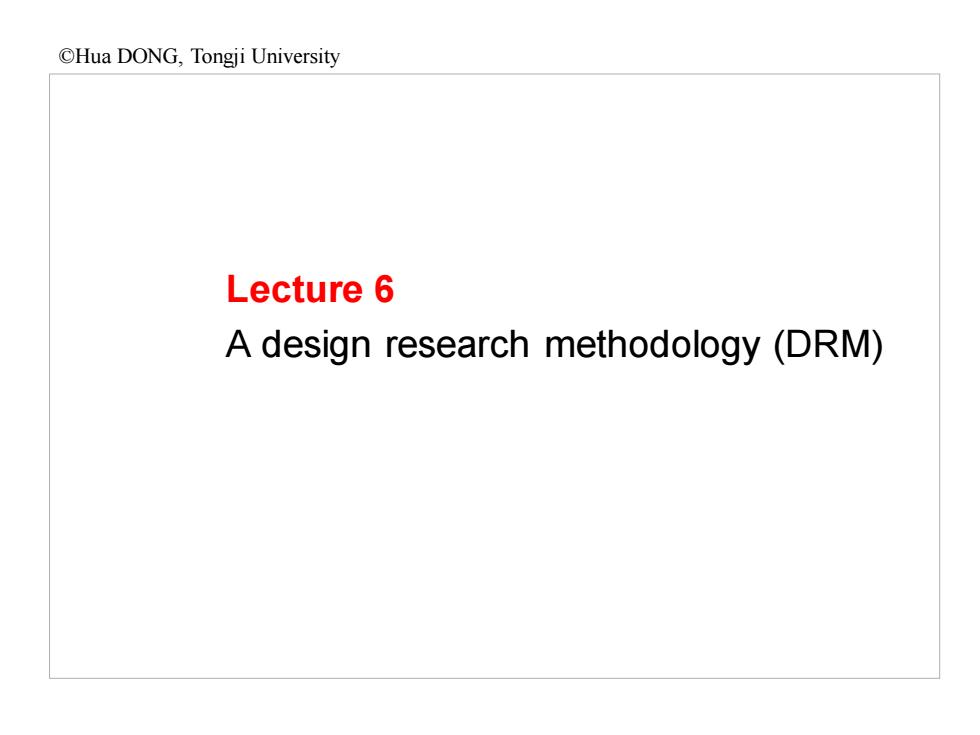
OHua DONG,Tongji University Lecture 6 A design research methodology(DRM)
Lecture 6 A design research methodology (DRM) ©Hua DONG, Tongji University
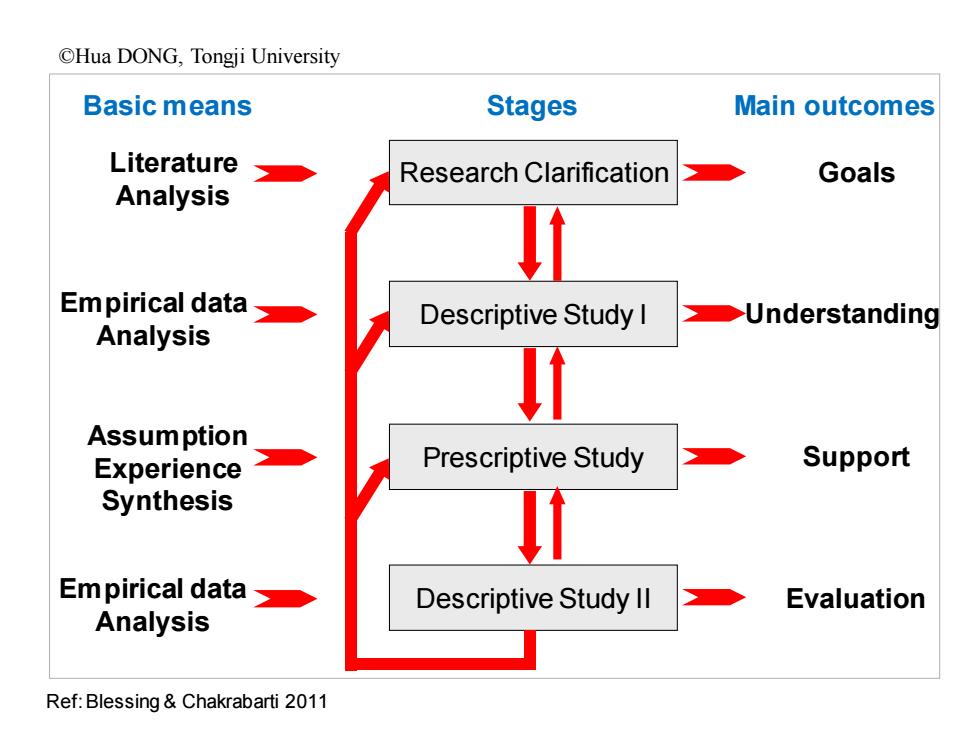
Hua DONG,Tongji University Basic means Stages Main outcomes Literature Research Clarification Goals Analysis Empirical data Descriptive Study I Understanding Analysis Assumption Experience Prescriptive Study Support Synthesis Empirical data Descriptive Study II Evaluation Analysis Ref:Blessing Chakrabarti 2011
Stages Research Clarification Descriptive Study I Prescriptive Study Descriptive Study II Main outcomes Goals Understanding Support Evaluation Basic means Literature Analysis Empirical data Analysis Assumption Experience Synthesis Empirical data Analysis Ref: Blessing & Chakrabarti 2011 ©Hua DONG, Tongji University
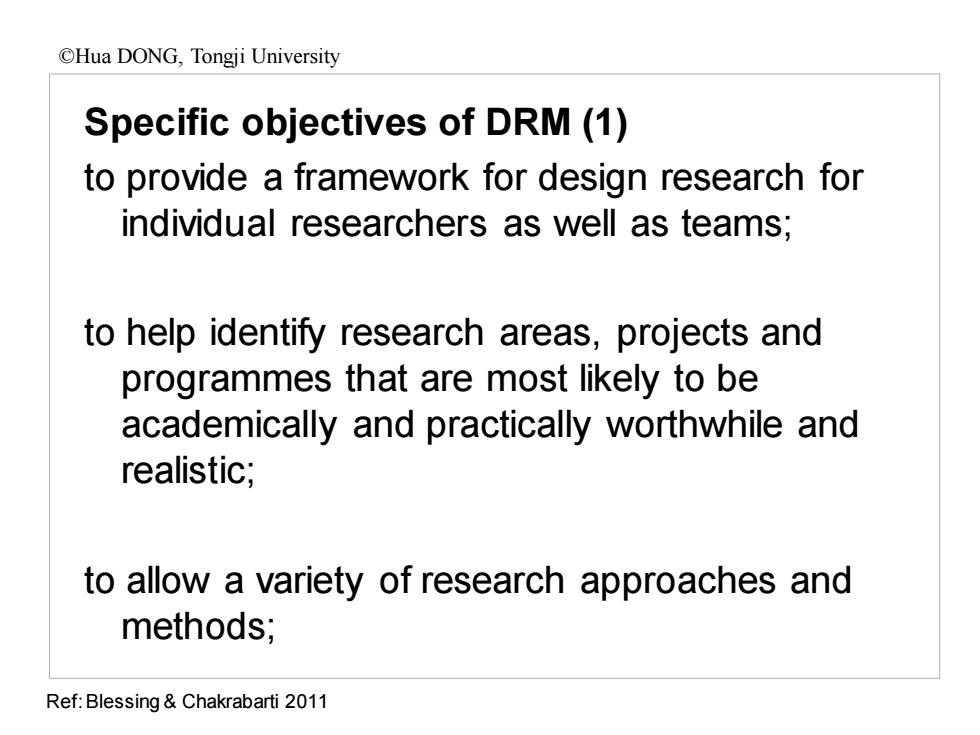
CHua DONG,Tongji University Specific objectives of DRM(1) to provide a framework for design research for individual researchers as well as teams; to help identify research areas,projects and programmes that are most likely to be academically and practically worthwhile and realistic; to allow a variety of research approaches and methods; Ref:Blessing Chakrabarti 2011
Specific objectives of DRM (1) to provide a framework for design research for individual researchers as well as teams; to help identify research areas, projects and programmes that are most likely to be academically and practically worthwhile and realistic; to allow a variety of research approaches and methods; Ref: Blessing & Chakrabarti 2011 ©Hua DONG, Tongji University
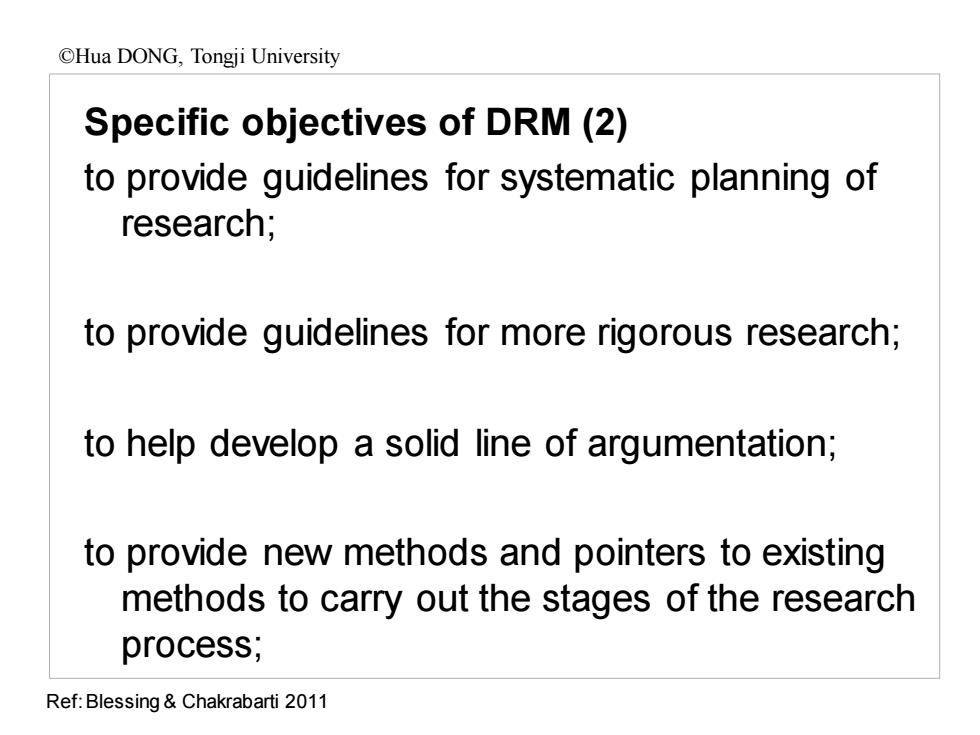
OHua DONG,Tongji University Specific objectives of DRM(2) to provide guidelines for systematic planning of research; to provide guidelines for more rigorous research; to help develop a solid line of argumentation; to provide new methods and pointers to existing methods to carry out the stages of the research process; Ref:Blessing Chakrabarti 2011
Specific objectives of DRM (2) to provide guidelines for systematic planning of research; to provide guidelines for more rigorous research; to help develop a solid line of argumentation; to provide new methods and pointers to existing methods to carry out the stages of the research process; Ref: Blessing & Chakrabarti 2011 ©Hua DONG, Tongji University
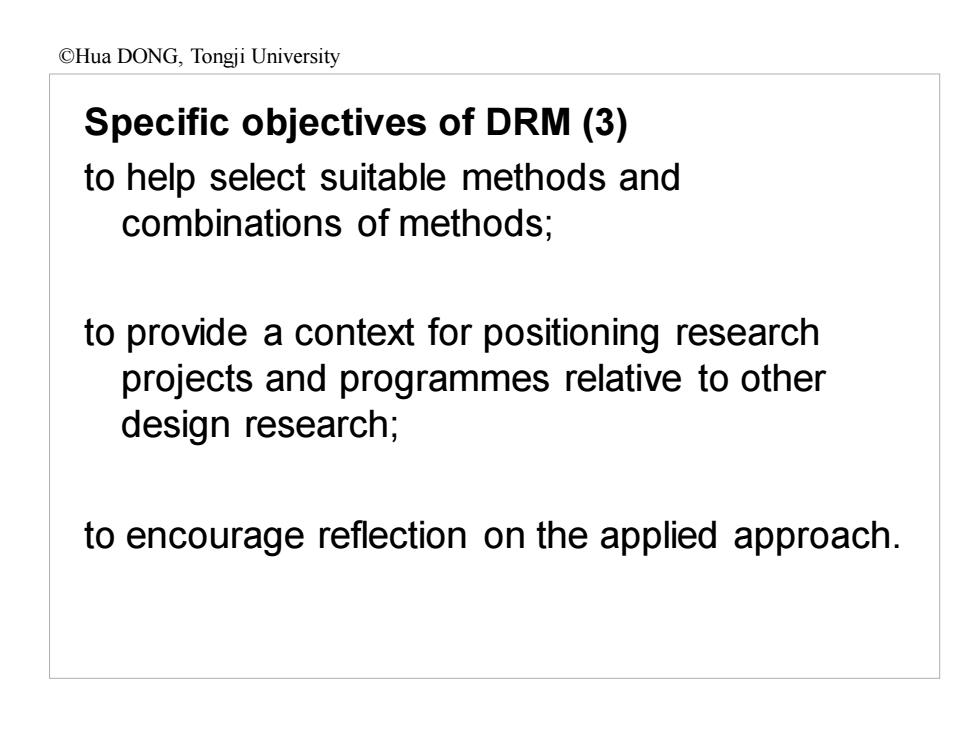
OHua DONG,Tongji University Specific objectives of DRM(3) to help select suitable methods and combinations of methods; to provide a context for positioning research projects and programmes relative to other design research; to encourage reflection on the applied approach
Specific objectives of DRM (3) to help select suitable methods and combinations of methods; to provide a context for positioning research projects and programmes relative to other design research; to encourage reflection on the applied approach. ©Hua DONG, Tongji University